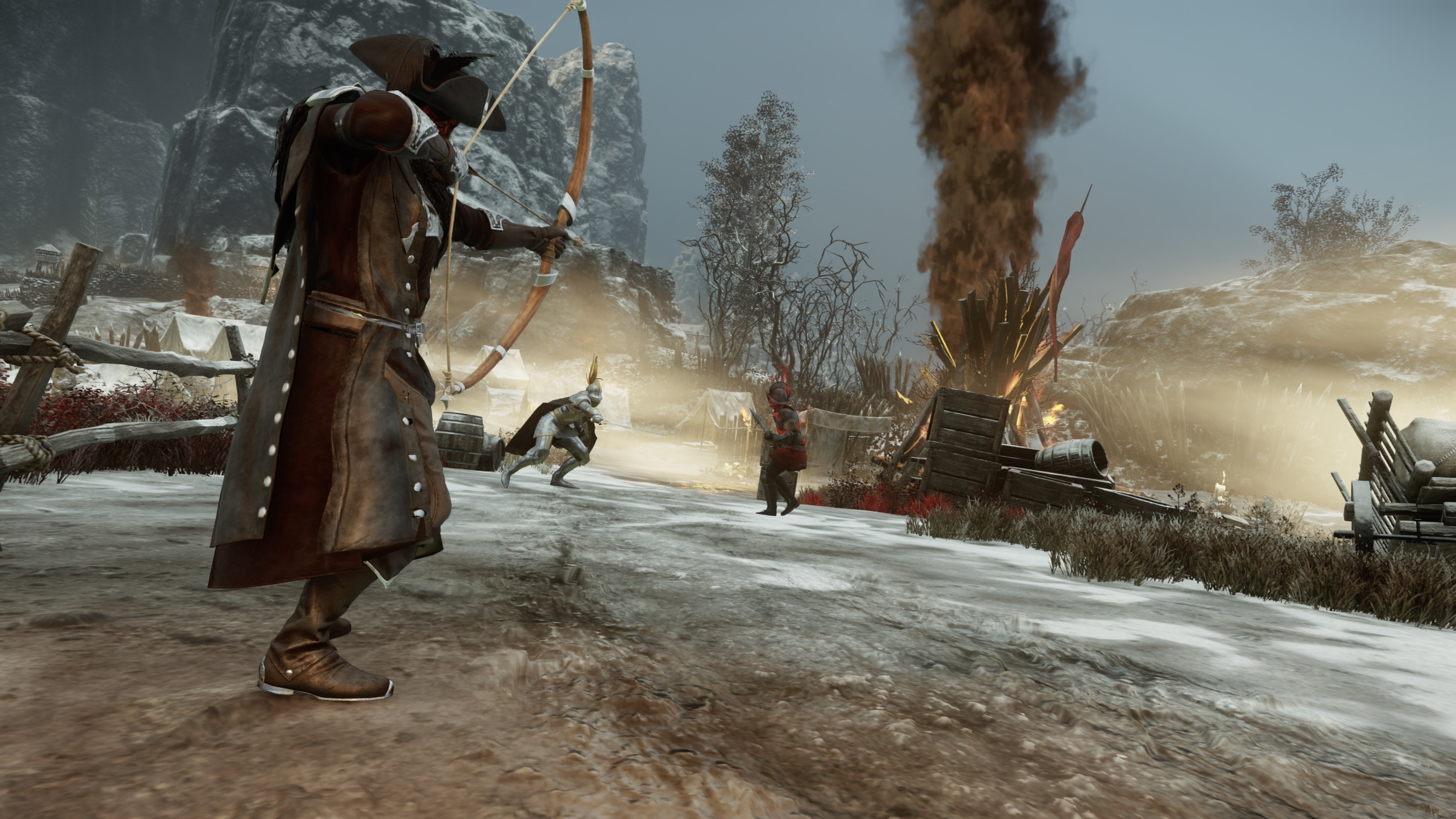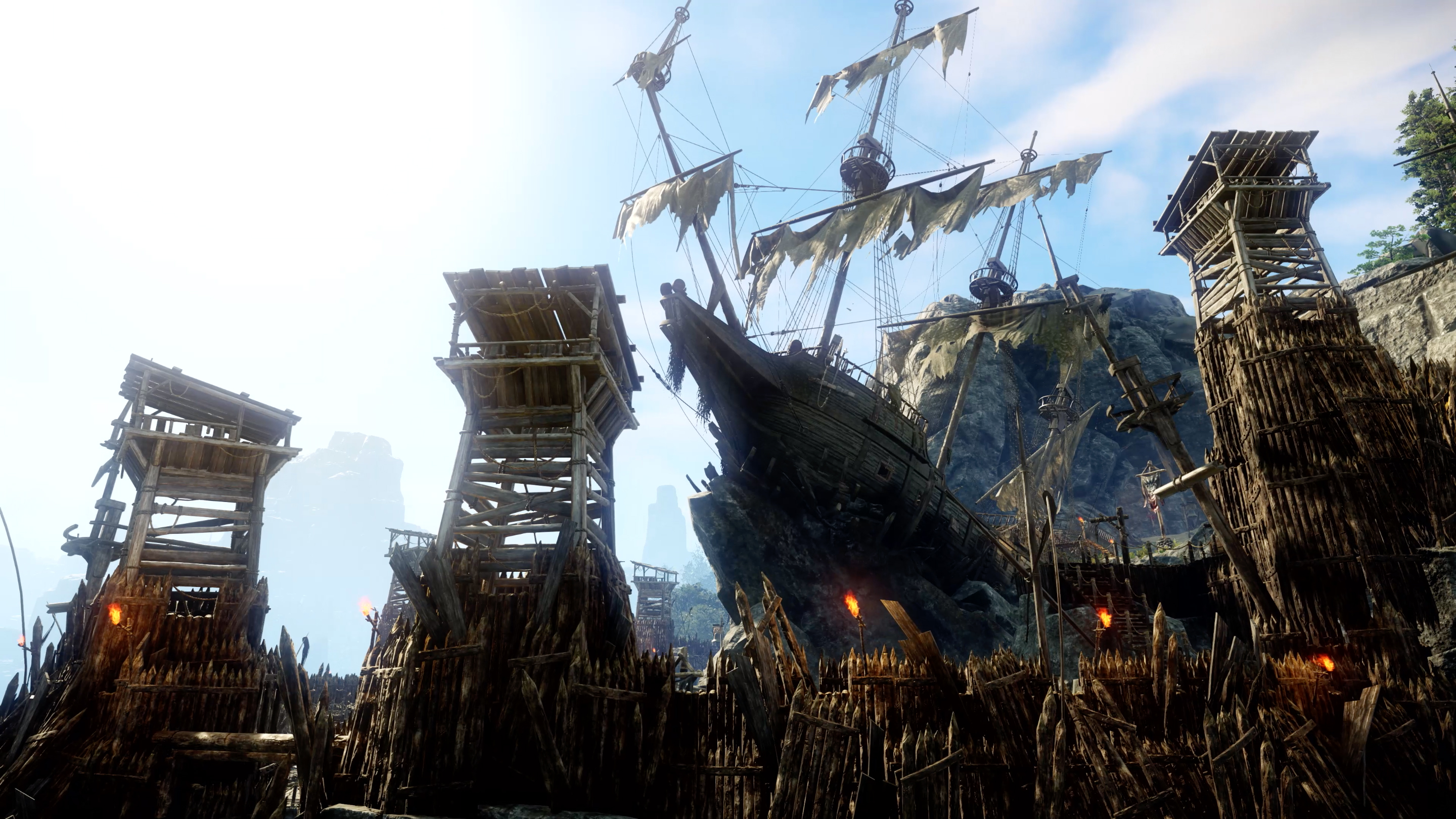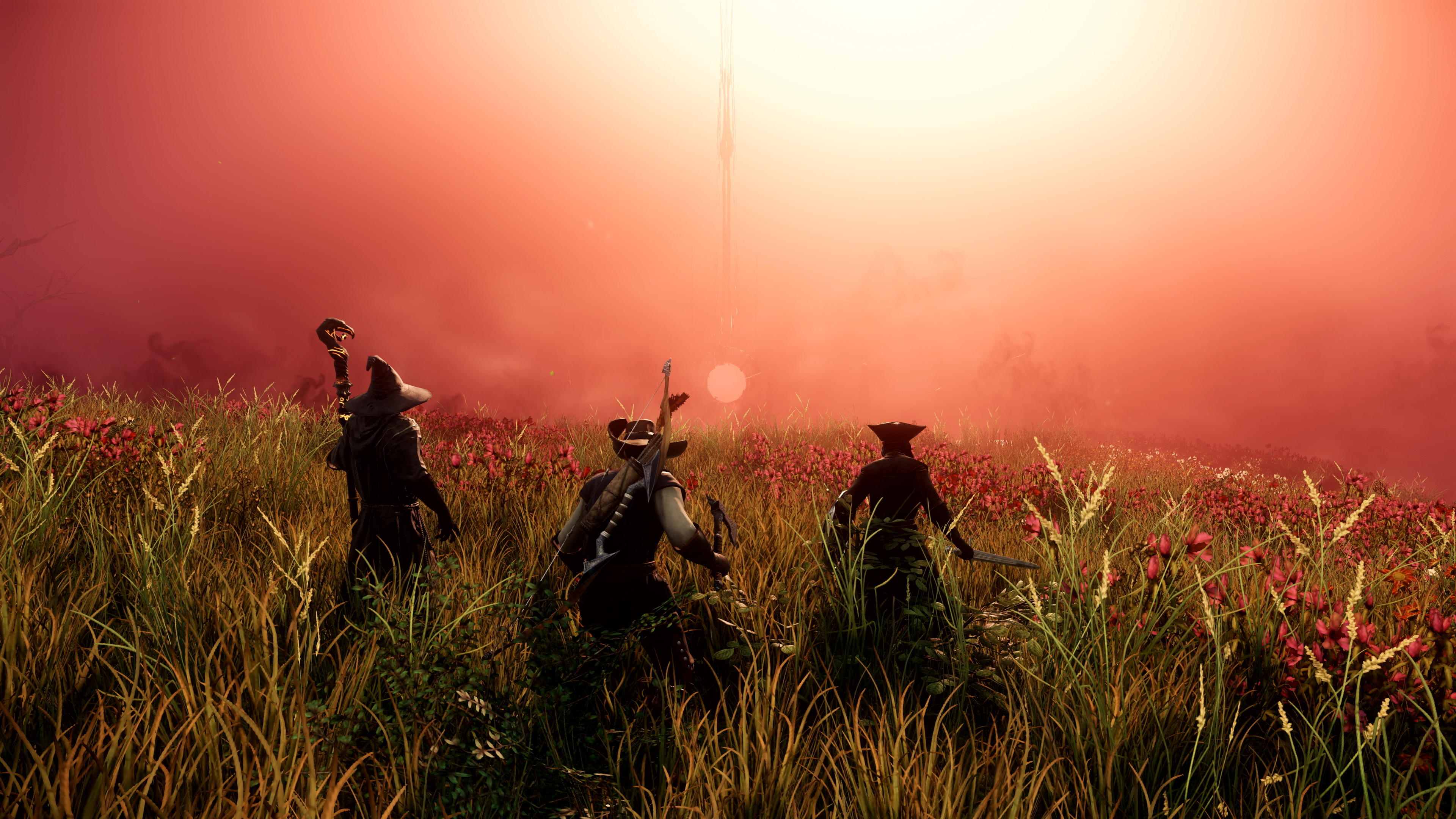New World hands-on: classic MMO questing with 50v50 territory wars
Amazon's MMO has changed a lot since its inception—here's what to expect come May.

Earlier versions of Amazon Game Studios' MMO nagged players with thirst and hunger, but now a sip from the bucket of river water in my inventory just replenishes a little health. Camping also feels a little like a vestigial organ from New World's old life as a survival game, even if campsites are still useful as respawn sites. Little seems to be precious to this dev team: If it isn't working it gets sanded down or reshaped into something else. The survival systems didn't make it, but you can still cook up useful buffs.
On the other hand, if players really want something new they're open to it. Another visitor at the Irvine studio asked if there were mounts. No, but they’ll add them if players want them. Naval combat? No, but maybe if players want it.
I pointed out later that naval combat doesn't make much sense in an MMO about being shipwrecked on an island. The response: Maybe the monsters on the island want to spread their corruption to the rest of the world and you have to stop them. Touché.
With the caveat that much is subject to change as Amazon’s testers prod away, here’s how New World works a few months away from release.
Tutorial on the beach
The opening hours put me through the traditional MMO rites. After washing up on the island of Aeternum, I’m sent to a watchtower on the beach where a tireless NPC runs me through a series of educational quests: kill some ghoulish ex-sailors to prove I understand combat, craft a skinning knife and butcher the local wildlife to pick up the basics of material gathering and crafting, learn how to loot a chest. It’s a yawn, but teaches what it needs to teach.
One thing hasn't changed since I last played New World: The interface is better than that of any other crafting-heavy game I've played. It almost feels too slick for the sword-and-musket fantasy world it's layered on top of.
If I walk up to a tree and press a key, my adventurer pulls out the axe I crafted and chops away without any further input from me. A thin circle fills, the tree clumsily removes itself from the soil and fades away, the wood is automatically added to my inventory, and my axe is automatically put away—I don't have to manually switch between tools at all.
Keep up to date with the most important stories and the best deals, as picked by the PC Gamer team.
In combat, pressing 1, 2, or 3 quickly swaps between weapon sets. I can throw an axe into a wolf's head and then grab the sword and shield on my back and dash into a thrust with just a few key presses. Sometimes a piece of equipment clips through my arm or shield—little visual hiccups are common right now—but it's buttery on a functional level.

The combat system is one of Amazon Game Studios' few precious features. Whatever the feedback ends up being, New World is committed to making you physically connect swords and arrows with your targets—no clicking once and watching 'X hits Y' scroll by in the chat window, as is so common in MMOs which took after text-based MUDs.
It's impressive that hit detection works as well as it seems to in 100-player battles. At least a few times an arrow or bullet whizzed by me because I just happened to switch weapons or turn a few degrees to the side and the shot threaded a gap in the animation. If one of my shots failed to connect, I had to assume the same thing happened, even if it appeared to hit its mark from my far-away perch on a fort's battlements. (And I didn't expect to hit much at that range, anyway, given that my arrows had to arc perfectly into squirrely players.)
In melee range, I dodge-rolled around, blocked, chained simple light and heavy combos, and threw out special moves which have long cooldowns. Against low-level AI enemies, an obvious pattern appears: dodge the big attack, strike, strike, block the light attack, repeat until victory. Higher level enemies throw in blocks of their own, ranged attacks, and group pile-ons, but fighting other players is the highest order of challenge. Even though there are stats and levels and equipment tiers, one tester could apparently walk around naked—in the game, not the office—killing anyone who challenged him purely through skill. At least until everyone else got better.

Gauging the length of an animation (can I take a swing before they recover?) and gauging distance (and will it hit if I start from here?) are the two main skills to develop, but there's more than timing to consider when fighting other players. Everyone can switch weapon sets at will, so a squishy-seeming archer might suddenly grab the warhammer attached to their back, and who knows which special attacks they've unlocked in the warhammer mastery tree, or if they're actually ultra-buff and the dexterity-dependent bow was a bluff.
In the chaos of battle, I mostly ran up behind guys who were peering down rifle barrels and jabbed them with a polearm or stuck hatchets into their backs. Then we'd run around trying to launch fancy moves, while at the same time getting knocked around and shot at by others. It's not as complex or fun as Mordhau, with its first-person view, feints, and parries, but it requires a smattering of the same skills.
Territory battles
Some players won't give a damn about PvP and politics, so there are AI invasions, too.
How a 50v50 player battle comes about takes some explaining, and things have changed a little since I last saw New World. The rapid fire version: The world is divided into territories, most of which contain a settlement and a fort. Territories are governed by companies, which are founded and run by players. The leader of a company can set tax rates in the territories they control—a little off the top from anyone who uses the settlement's crafting equipment—and encourage the public to contribute to improvement projects, such as better fort defenses and higher tier crafting stations. If another company thinks they ought to be in charge, they can declare war, and a battle will take place at a real-world time set by the defenders. Each company can recruit up to 50 players to fight in the battle—they don't all have to be company members—and then the siege commences. Winner takes, or keeps, the territory.
Why would you fight for a company you're not a member of? Most likely: You've got nothing to lose and it would be fun. But maybe one of the companies promises lower taxes, or public projects like improved crafting stations. You'll unlock perks in territories you've spent a lot of time in, such as extra XP or lower taxes when you do your business there, so there's incentive to keep a governor you like around. And if you bought a house in the settlement, it acts as a fast travel point.
Houses aren't new structures that you can plop by a lake—another idea that was scrapped—and so they take a little imagination to make sense. Each territory's settlement includes houses, and when you enter yours you'll see the stuff you've decorated it with (which can give you buffs out in the world). It's just that someone else entering the same exterior will enter their house. Let's just say it's magic.

Restraint is the key word for New World. If the testing and feedback is on point—I'm taking the devs at their word about this—it wasn't actually much fun to let players put houses wherever, so they'll be in set locations. And if companies designed crappy forts, the big siege battles sucked, so Amazon took over fort design and gave them control points and back entrances to sneak through. And while 100v100 PvP battles sounded extravagant and were technically possible, they weren't actually as fun as 50v50 battles, so that's what they're going with right now.
'There's a new MMO on Steam, it's $40, and you won't die of thirst after 15 minutes' might be the right hook for the times.
Meanwhile, some players won't give a damn about PvP and politics, so there are AI invasions, too, where players defend forts from a horde of corrupted beasts. And if they don't care about that, they can go fight undead pirates and dryads and ancient skeletons on their own, or join a small group and seek out the big boss (there's just one for now) like they would in many other RPGs and MMOs. I haven't explained every system, but they're familiar: optional open world PvP, healing and fire magic, a detailed crafting system, trading posts.
The territory control system could make for some fun war stories, but New World isn't throwing out all the MMO conventions, and isn't promising revolutionary player agency. You don't get to build the world yourself like in Everquest Next, which never made it to release. It isn't nearly as expansive as Star Citizen, which is still in alpha after nine years. It's an MMO that's a bit different from what's already out there. There'll be weekly patches, and monthly content updates, and probably some expansions down the line (naval combat, maybe, if that's something the players want).
'Let's not go too wild and listen to feedback' doesn't lend itself to catchy marketing slogans—they say they want to be the "most customer-focused developer," which is about as vague as corporate-speak gets—but 'there's a new MMO on Steam, it's $40, and you won't die of thirst after 15 minutes' might be the right hook for the times.
New World will be out sometime in May, and the developers say there's no reason to expect a delay. Now let's see if Amazon's cloud infrastructure can be used to launch an MMO without day one connection issues—that would be a feat.
Questions about New World that aren't answered here? Ask me in our forums !

Tyler grew up in Silicon Valley during the '80s and '90s, playing games like Zork and Arkanoid on early PCs. He was later captivated by Myst, SimCity, Civilization, Command & Conquer, all the shooters they call "boomer shooters" now, and PS1 classic Bushido Blade (that's right: he had Bleem!). Tyler joined PC Gamer in 2011, and today he's focused on the site's news coverage. His hobbies include amateur boxing and adding to his 1,200-plus hours in Rocket League.

